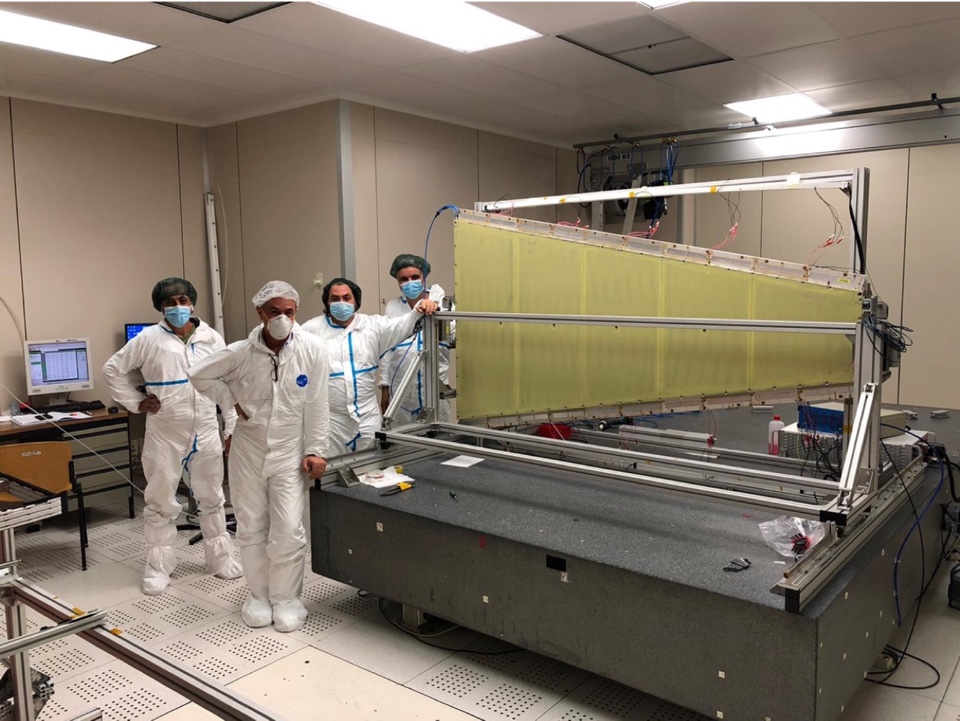
Last 14 October, the ATLAS group of Frascati Laboratory of INFN completed the construction work of the MicroMegas chambers.
These are gaseous detectors developed in the ‘90 by George Charpak and Ioannis Giomataris, two distinguished experimental physicists.
MicroMegas stands for Micro MEsh GASeous Structure and refers to the special tool called “mesh” that amplifies the charge produced by the particles entering the gaseous atmosphere of the detector.
With respect to the traditional gaseous detectors, these chambers allow to reconstruct, with better accuracy, the trajectories of the charged particles and will replace the Monitored Drift Tubes MDT that at present are installed in the forward region of the ATLAS muon spectrometer.
The work just completed took some years and required also a Research & Development phase to optimize the performance of the new detectors. Seven different INFN groups were involved to realize overall 33 chambers that now are ready to be inserted in the ATLAS spectrometer at CERN.
At present, the Large Hadron Collider (LHC) the accelerator where ATLAS is installed, is in a maintenance phase (Long Shutdown 2) in order to allow interventions to increase the particle collision rate.
The Italian collaboration, led by the Frascati ATLAS group, has been extremely important for the realization of these detectors taking care of the optimization of the critical elements and developing solutions to improve their functionality and operation. Several groups in other countries (France, Germany, Russia) are participating to the project and are implementing the solutions developed in Italy to complete their fraction of chambers production.
 INFN-LNF Laboratori Nazionali di Frascati
INFN-LNF Laboratori Nazionali di Frascati